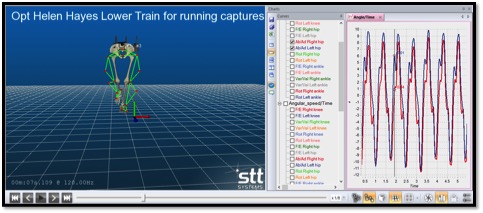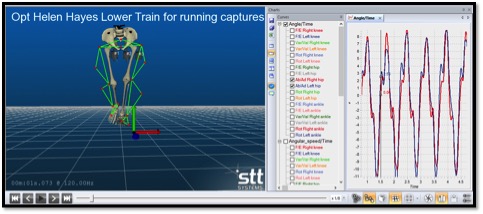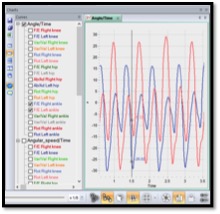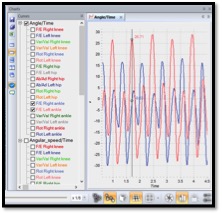I hope you are all having a great start to the new year! One of my favorite parts about this year is how excited people get about working out, particularly for running. Many resolution setters will be lacing up their shoes and heading out for a run. Unfortunately, this also means that I get to meet a lot of injured runners as a Physical Therapist.
Anyone who is getting started running, getting back to running after a break, or even training for a new goal will benefit from checking out their running form. A typical runner taking 170 steps per minute for a 9 minute mile takes over 1,500 steps each mile. Imagine what a small change in form can do to either help or harm them as a runner.
Below is a great case study about a runner that I was treating that demonstrates how looking at running form (AKA Gait) can help to prevent re-injury and/or to improve her performance. She was seeing me for a Right hamstring strain from a fall while running, and was able to get back to running 4 minutes/ walking 1 minute for 20 minutes.
While doing her return to run progression, she developed shin pain (Right worse than Left), so we thought it would be good to do a 3D gait assessment on her to make sure that she did not change her running (or have long standing form changes) that could put her at risk for injury.
If you look at the picture below you will see that she was landing with increased hip Adduction on the left (crossover gait).
- Note the position of the foot related to the center of mass (Skeleton picture on the left)
- Note the first peak (on the right) for the Left hip (Blue) is significantly higher than the Right (Red), indicating that she is landing in increased hip ADD
 Figure 1: Hip ADD Normal Running
Figure 1: Hip ADD Normal Running
Seeing this, we gave her cues to try to widen her step width on the left. We first tried imagining she was running down a line (which definitely did not work!), and finally found a cue that worked for her by having her pretend there was a volleyball between her knees. She immediately felt less pressure at the knee, so we did a second capture on the 3D gait and found improvement! (See picture below and compare the foot position and the improved symmetry in the curves)
 Figure 2: Hip ADD with cues to imagine a volleyball between her knees
Figure 2: Hip ADD with cues to imagine a volleyball between her knees
I also did an ACE Running Movement screen on her and found that she had limitations with depth of her squat, which was related to gastroc tightness. When I looked at her ankle dorsiflexion from the 3D Data we noticed quite a difference in how much dorsiflexion she was going through at Mid-Stance. (Figure 3: Left in Red at ~30 degrees with Right in Blue at ~15 degrees)


Figure 3: Ankle Dorsiflexion pre Figure 4: Ankle Dorsiflexion post
If you look at after gait re-training (Figure 4), you will see that there was not much change here. This tells us that we need to work on her mobility issue in the calf. Not everything can be fixed by changing someone’s running form, and we need to make sure we are taking a complete look at these runners.
My hypothesis was that she had tightness in the right calf (maybe related to the hamstring strain) that limited her dorsiflexion on mid stance effectively making this limb longer. To compensate for the longer right limb, she was abducting the left hip during swing resulting in momentum leading to increased hip adduction on the left.
Her plan of care looked to address the changes in her gait and mobility issue in the calf by combining a gait re-training schedule using the volleyball cue, a change to her dynamic warm up to promote Gastroc flexibility, and running drills to reinforce what she is doing with her gait re-training.
The patient was psyched to see how much of a difference gait re-training made in her running, and excited to do the program. I encourage everyone to take time to look at their runners and see how you can help them achieve their running goals. If you want to learn more about how to assess running form and learn more about gait re-training sign up for our newsletter and get $50 off our course Essential Elements of Running.
Thank you to Douglas Adams for being a regular contributor to our voices column and writing great content. Make sure you check out the rest of his work here.